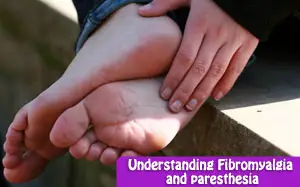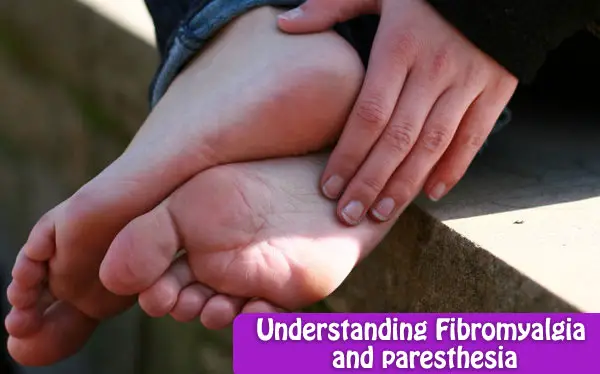Fibromyalgia
This is a condition also known as fibromyalgia syndrome (FMS) or fibrositis that affects the muscles and nerves of the patient.
It is mostly a long term condition causing pain in a wide range of body parts. Research and studies have shown that this is the second most prevalent rheumatic disorder, this is after osteoarthritis which is also known as degenerative joint disease.
This is a condition that is hard to identify due to the wide range of symptoms it can present itself in without any specific combination of symptoms being a sure sign.
This is the case also because the disease does not have a known causative agent.
It also comes without any warnings and there is not a certain group that can be said to stand a greater or fewer chance of suffering the condition.
For people who have never suffered from the same, it is especially hard and confusing to them since they do not understand it.
This condition is, however, more common to women than men. Statistics suggest that the case is seven times more prevalent in women compared to men.
It attacks any person at whatever age bracket they are in. However, it is more common for people between the ages of thirty and fifty years.
This condition, which can be lifelong, affects the central nervous system leading to chronic pain. It is a condition that has often been misdiagnosed and is still misunderstood.
This lack of understanding of the disease has in the past lead to patients suffering from stress and depression others becoming introverts and separated socially.
As discussed above, the main symptom in this disease is chronic pain throughout the body.
This condition has other symptoms such as depression and anxiety, a feeling of fatigue even when there is no reason for the fatigue, and a decreased pain threshold.
Other symptoms such as numbness in some body parts, feeling abnormally stiff and acute headaches may accompany the pain.
Different methods may be used to identify the condition and control it. Unfortunately, it has no cure.
All that can be done at present is the treatment of the symptoms of the disease. For example, a person having depression will be administered with antidepressants.
In most cases, painkillers are prescribed to solve the issue of acute pain in the body. Other treatment methods applied to affect the lifestyle of the patients.
These are exercises and relaxation programs. Aerobics and different behavioral techniques may be applied to resolve this.
It is also highly recommended that people suffering from the condition participate in relaxation therapies and activities.
This is not to cure the condition but to help reduce the level at which the patients suffer from some of the symptoms of the disease.
For example, sleeping and general relaxation may put the body in a state more convenience to repair itself.
Paresthesia
Ever felt a feeling of a limb going numb or feel like it is “sleeping”? This may be what is known as Paresthesia.
It is more popularly known as pins and needles. This is a very common condition that has happened to a majority of people though not seriously.
Still, very little is known about the condition, why it happens, how to prevent it, how to cure it, etc.
This temporary Paresthesia occurs due to a lot of pressure being placed on a nerve for a long time.
You may have found out that once the pressure is removed, the feeling quickly fades.
However, there is a more chronic form of paresthesia that attacks the body. This is more often than not a symptom of another condition that the patient may be suffering from.
For example, it could be caused by nerve damage due to trauma, shock or a neurological disorder.
Other causes could be due to inflammation caused by disease or injury and or infection.
It is in the rarest of cases that Paresthesia is life-threatening, or is caused by a life-threatening condition.
Some of these rare cases are due to a maybe a tumor or the patient suffering a stroke.
This is a condition that affects the transmission of impulses through the nerves by the neurons. It leads to loss of sensation in contrast to paralysis, which leads to both losses in sensation and movement.
Temporary paresthesia can be easily cured by lifting any pressure that was applied on the affected part.
It the paresthesia does not wear off; the cause may be something greater, and you should visit a doctor as soon as possible to examine the situation.
Curing this will be a more complicated process as the underlying cause of the problem has to be found out first.
Relationship between Paresthesia and Fibromyalgia
One of the underlying causes of Paresthesia is Fibromyalgia. A person may suffer from Fibromyalgia due to any of the above-stated reasons then due to complications, the neurons of the nerves become affected.
This may lead to the neurons being unable to transmit impulses as they are supposed to lead to Paresthesia.
This often leads to the treatment of the paresthesia to be more complicated and there may be a need to customize the remedy to that situation for the patient.
This condition can be even more complicated. There are cases apart from suffering from the above.
The patient also has another condition maybe hepatitis, meningitis or diabetes. The treatment here is more complicated, and the patient may need to have a much more customized remedy to help with the conditions.
To make matters worse, when paresthesia is accompanied by fibromyalgia, the pain is more acute.
The pain usually comes in different forms, for example, the patient may get intense burning sensations then get an irritating itch later.
This is what leads to anxiety and depression since the patient does not understand what exactly is wrong with them.
To relieve the pain, and for the treatment of this condition, patients may respond differently to different techniques used to treat them.
While some get relief from physical therapy, to others this does not work and they have to take supplements. Others find relief from getting massages while others respond to acupuncture.


I love riding my electric bicycle, easier than walking with fibro….
My hands and feet will feel numb and become super cold to the point where it starts to hurt really bad from being so cold. My legs will get super cold too, if you touch my legs you can feel how cold they are through my jeans. One rhemetologist suggest raynaud’s and another said it wasn’t raynaud’s because I don’t really have the color changes you see with raynaud’s. Sometimes my hands or feet will look a little blueish but that’s it.
what is the difference between polymyalgia and fibromyalgia
I have heard that in America they have Stem Cell treatment is it available hear and if not why.
I would describe the burning in my back, legs and feet like a very severe sunburn, I feel if I stood on ice it would melt with the heat